Like us, plants need nutrients to live. So do your weed plants. The crop requires nutrients to germinate, vegetate, flower, and fight off pests and diseases. We have several kinds of crucial nutrients that your weed crop needs. The nutrients are classified into macronutrients and micronutrients.
Macronutrients are the primary ones and include nitrogen, phosphorus, and potassium. There are also secondary macronutrients and are Calcium, Magnesium, and Sulphur. The micronutrients also trace elements that also play an essential role in a plant’s growth. These are manganese, boron, zinc, copper, molybdenum, and iron. Each one of these elements has its role in the development of your cannabis plant.
This guide is going to focus more on calcium. We will expound on its primary function on weed, the amounts required, and its deficiency. If the deficiencies happen, we have the answers. We will give you tips on spotting the calcium deficiencies and solving them to recover your crop back.
Calcium is essential for cannabis’s healthy growth. If your plants miss the element or they get excesses, they suffer and do not yield well. Alongside Sulphur and magnesium, calcium is a secondary macronutrient. However, its classification as a secondary macronutrient doesn’t mean that your weed plant does not need the element.
This nutrient is required in lower amounts as compared to the other macronutrients. In addition, weed requires calcium from germination to maturity. As a result, the crop stays healthy, grows to full potential, and gives you attractive yields.
Experts classify calcium as an immobile nutrient because it stays in the marijuana plant cell and does not move to other tissues. This means the old tissue will continue to benefit while the new tissue misses the essential element. Other elements like nitrogen and phosphorus move to new plant cells and are therefore mobile nutrients.
Your weed crop requires calcium in all its stages of growth. The amount will vary in the different growth stages. These requirements vary depending on its growth phase. As we mentioned, the element is immobile and embeds itself in the cells without moving to newer cells. There, it serves many roles. Here are calcium’s critical functions in weed;
Seeds have enough nourishment and do not require any nutritional supplement. That’s the same for weed seed. During the germination process, they have enough food in the cotyledon. The cotyledon has all the requirements until the seed sprouts. You, therefore, will not require to add any supplements when sowing the seeds. Even if you did, that would be part of the soil preparation so that after germination, the plant can get the nutrients like calcium, potassium, and phosphorus, among others.
After germination or when the clones are young, weed requires minimal nutrition. That includes calcium requirements. The recommended dosage is 25% of the vegetative calcium requirements.
The low dosage is because the plant is young and the cells structure is still forming. Overfeeding the plant with calcium will overwhelm its absorption capabilities. This often leads to undesirable effects that we are going to see in detail later.
Some weed strains like autoflowers enter the vegetative stage by the second week because their growth time is limited. Others begin vegetating actively at week four or five. The onset of the vegetative phase depends on the variety and strain.
As your crop enters the vegetative phase, they require more calcium than during the seedling stage. Give then the recommended calcium at the correct dosage. This, too, depends on the variety. For example, autoflowers require fewer nutrients and so less calcium than the regular cannabis requirements.
For all the cannabis varieties, moderate calcium levels are excellent. You could try out the premade weed mixes as they have fair portions of calcium and other secondary nutrients, including Sulphur and magnesium.
A Marijuana crop flowers at different times. That is dependent on the variety. For instance, autoflowers enter the phase earlier than other strains. All the strains grow vigorously during pre-flowering. During this phase, your buddies will stretch considerably and require extra calcium than in the vegetative stage.
The nutritional element boosts the growth of the roots and facilitates heavy budding. As a cannabis grower, you need to be keen at the budding stage to determine your harvest. More budding means more flowers and greater yields. A calcium boost will help you achieve this.
The pre-flowering phase is the peak of calcium requirements. That does not mean that you stop the boosts during the flowering stage. It means that you reduce the supplement as it is required in fewer doses.
Any calcium deficiency during this stage will decrease production the flowers will not bloom well. That will affect the general health of the plant. When you stick to the recommended calcium dosage, you will grow weed successfully.
You now understand what calcium is, its function, and the requirements at various stages of weed development. When you fail to supply your weed with calcium or undersupply the nutrients, you will have deficiency syndromes. Let’s grasp the various causes of these essential elements.
At this stage, you know the importance of calcium’s nutritional element. You already know that your plants’ nutritional requirements at different stages. Before sowing, you got a bag of compound fertilizer with plenty of calcium.
Alternatively, you got a unique DIY mix of tens of ingredients at home to ensure your plants get the best of best. You have tried your best, but the deficiency signs are visible on your crop. The plants do not look as healthy and vibrant as they should be. We know why that is happening, and we are going to show you the several causes. Below are the reasons why you still have calcium deficiency in your cannabis plants;
All cannabis strains are happy with 6.0 to 6.5 pH levels. Anything below 6 is too acidic for the plant, while above 6.5 is too alkaline. Too acidic or too alkaline environment blocks nutrients intake in plants. Acidic conditions lock out calcium absorption leading to malnourishment of the element.
A devoted marijuana farmer strives to keep the medium they are growing weed at favorable pH levels. They have the pH testers to give the correct levels and avoid guessing. If the levels are below 6.2, you can raise that to 6.2. Add finer limestone particles into the medium to solve the acidity. Within a few days, your plants will absorb all the calcium they require.
If the pH levels are beyond 6.5, aluminum sulfate will bring it down to the perfect absorption levels. Acidic water could be the reason why calcium is not getting into the plant cells. Keep the water pH levels between favorable levels, not only for calcium intake but also for the other nutrients.
Lack of soil preparation before planting may find you with calcium gaps. Planning is essential before you undertake any marijuana cultivation project. The project involves early preparation of seeds, pH, nutrients, medium, water, humidity, light, shelter, and other essentials.
If you hurry up and miss out on some items, it will end in disaster. Some strains will not even allow you time for afterthoughts. An example is autoflowers, which grow at lightning speed.
Before sowing, test your soil to find out the pH and nutrients levels. It is when you find the gaps that you will seal. If you find fewer calcium levels, you will add the missing portions. You will also normalize the pH, which is a tremendous obstacle to calcium absorption. With a perfect growing medium, you have all the calcium that your plants need. You also have the best conditions for nutrients’ absorption.
Reverse osmosis water is demineralized water. Though the process removes all the contaminants from the water, it strips off all the essential minerals like calcium and magnesium. Sometimes you have no alternative to reverse osmosis water, yet you have to provide your weed with the juice of life.
Make sure you add enough calcium supplements to nourish your weed crop throughout the growth period. If your water has sufficient amounts of calcium, deficiencies won’t happen. It is prudent to test whether the water you have is mineralized or demineralized. This way, you will prevent calcium deficiencies or over supplementing.
Most often, coco substrates have no enough calcium, yet many growers think otherwise. The medium also lacks other essential nutrients. Add bone meal and shells to improve your coco medium. That will provide your weed with extra calcium.
When the soil has excess potassium, it hinders the absorption of calcium by your plants’ roots. That is why we recommend testing the available nutrients in your soil medium before you begin cultivating weed. That will reveal the levels to you. If you notice higher potassium levels than needed, the first thing is to stop any further additional supplements.
You can also drench the soil to dissolve the excess potassium as you prepare to plant your crop. This method is not reliable as it will take away other nutrients from the drain. We recommend that you start from zero by testing the nutrients level and adding in all over again. This way, you will be sure that the potassium levels are not exceeded. The draining of the nutrient’s potassium is only applicable before planting.
Another way to help conquer excess potassium levels is by adding more calcium. Mix in crushed eggshells, wood ash, and seashells with the soil. The calcium will be more so that an increase in absorption is possible. This process is great if you have the crop growing. Over drenching your soil is disastrous as it can kill all your plants. Be careful not to add calcium in excess.
We saw earlier that calcium does not move from a plant cell. That means the cells that have enough calcium are vibrantly multiplying than those that don’t have. If there are shortages, that will only affect the newer cells and not the older ones. Many visible signs will show up on new shoots as follows;
Lack of calcium leads to tiny distorted buds. We mentioned above that during the budding, calcium intakes are high to aid the development of flowers. If there is a deficiency, the buds’ development begins slowing. This is disastrous as the buds are what reveal your potential yields. Unhealthy buds spell for you low yields. Your buds will also not have pronounced profiles if they lack calcium.
The calcium you once provided your plants is right there in those cells. The new growth gets no share if you cut down supplies. The new shoots will soon begin to twist and also turn purple or yellow. That means your weed crop is slowly dying off. IF you allow this stage in, you will lose the crop.
Calcium deficiency in weed crops leads to stunted growth. The plant will look sickly, weak, and thin. This means the roots are not absorbing enough calcium and other nutrients. The shortage affects the cell structure, growth hormones, and enzyme secretions. Without a perfect cell structure, cell division and multiplication slow or stops, leading to the slow growth you have noticed.
Brown patched leaves indicate death. It all begins with yellowish and brown edges on the leaves. Next, it is crumbling, which is a dangerous sign that your plant is dying.
Have you witnessed cannabis plants’ branches falling off or stems breaking unnecessarily? You probably thought the leaves and buds were heavy. While that could be true, it is not a common occurrence to healthy plants.
A healthy marijuana plant will support its buds well, regardless of the weight. If you have a few plants with broken limbs, that is due to calcium deficiency which has weakened the stem and the branches. If the same goes on, you will lose many plants and have fewer yields.
Calcium prevents cannabis plant diseases. It does that by making the plants resistant. Root rot is one of the signs that your crop is lacking calcium. The disease, among others, is a result of fungal or bacterial infections.
As a passionate weed grower, your desire is not to have a malnourished crop. Mistakes may happen. The earlier you spot the deficiency, the easier it will be to solve. Do not freak out. Solving the calcium deficiency is not a daunting task; however, you have to be extra patient as the damage is slowly creeping in or has already crept in. There are various ways to solve the problem, which will narrow down to the method of cultivation.
Treatment is the first idea of marijuana growers when they notice signs of ailment on their crops. Scrutinize whether the signs that you have spotted are a result of calcium deficiency. When you establish the facts, you can go ahead with the calcium foliar spray supplements.
The most popular is calcium nitrate. The supplement dissolves faster in water and is easily absorbable. It should work perfectly before the flowering stage. It contains nitrogen, which is not necessary for your cannabis plant during the flowering stage.
For slow absorption, you can consider adding dolomite lime, seashells, eggshells, and fish bones. These are organic supplements that show results in a week.
Soil for cultivating weed should have a pH range of 6.0 and 7.0. More or less, the ranges will block nutrients intake. Weed roots suck in calcium at 6.2. If the pH is lower, you expect deficiencies. In hydroponics, then this is not different for calcium intakes. The overall nutrients intake is between 6.2 and 7.0.
Set up your systems at lows of 6.2 and highs of 6.5 for calcium intakes. Most nutrients fall in that range, so no need to worry. To reduce high or increase low pH, you would either add aluminum phosphate or limestone granules consequently. You can treat the soil, coco coir, and hydroponics by adding in Cal-Mag in the setups after leveling the pH.
Excess potassium blocks calcium intake in marijuana. If your crop is growing and you notice excess potassium, you have to stop immediately. It may be difficult to flush the salts at a go but keep on watering to dissolve them in the shortest time possible.
Meanwhile, you can stop any supplements that have potassium. That doesn’t mean you will stop completely. After the levels are back to zero, begin with the recommended dosage to avoid more salts. You will soon find your crops on their way torecovery.
When you buy different strains, you get a leaflet with dosage recommendations. Read these through and stick to these guidelines. You have the proper calcium ratios measured for you.
Calcium deficiency in weed happens due to several reasons. It necessarily doesn’t mean that you didn’t feed your buddies with enough calcium. You did it, but now you have a frail crop that has no promise of an excellent yield.
Fortunately, you can solve that by trying out our guide. Here, you have all the essentials of calcium in weed, its deficiency symptoms, and how to balance the nutrient throughout the growing period. Do not let calcium deficiencies rob you of your desired yields!
Calcium is crucial for the healthy growth of cannabis plants. It strengthens plant tissues, enhances cell membrane permeability, supports nutrient absorption and translocation, and aids in enzyme activities, energy generation, and hormone regulation. Proper calcium levels help cannabis plants resist diseases, pests, and heat stress, ensuring robust growth and high yields.
Calcium deficiency in cannabis plants can be identified by several symptoms:
Several factors can lead to calcium deficiency in cannabis plants:
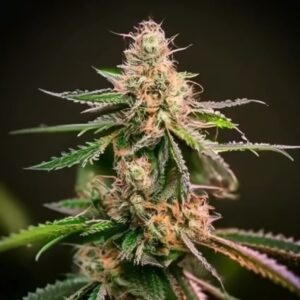


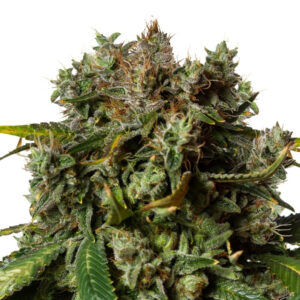

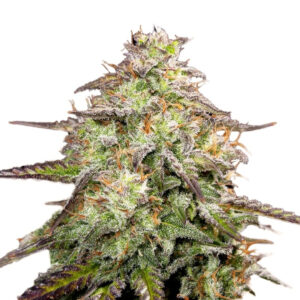
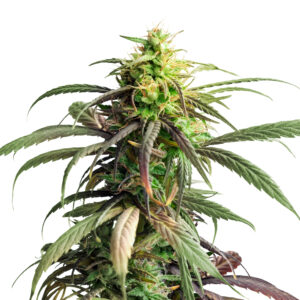






Related Posts
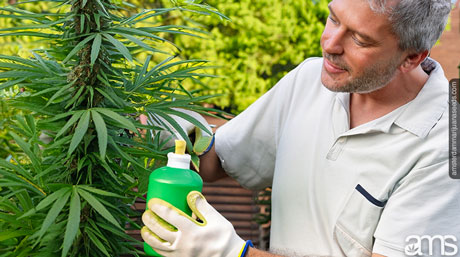
Seaweed is a highly nutritious and natural fertilizer for your cannabis plant. It is packed with beneficial nutrients and vital minerals that ensure maximum health, vitality, growth, and high yields. Seaweed extracts are especially beneficial for your cannabis plants, as they protect them from defects that can ruin their health. So you get bigger, stronger, and well-developed plants. For instance, Kelp, an algae seaweed, possesses more than 60 trace elements that boost the health of your cannabis plants and improves their tolerance to pests, diseases, and stress!

Growing marijuana requires more than just sticking a few cannabis seedlings into the soil and waiting for its buds. In addition to carefully tracking its growth, cannabis demands a lot of careful tendering.
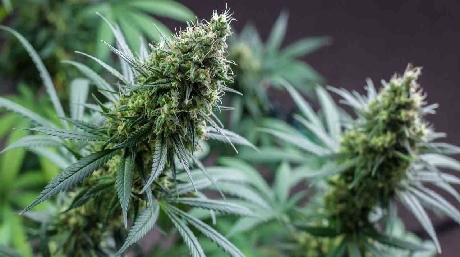
Potassium is associated with the, adenosine triphosphate (ATP) production. It promotes growt and improves resistance. Potassium is one of the three primary macronutrients crucial for weed development. The macronutrients play different roles in a plant, including promoting the steady growth of your cannabis crop. They also maximize your plants’ genetic potential that guarantees you quality yields.